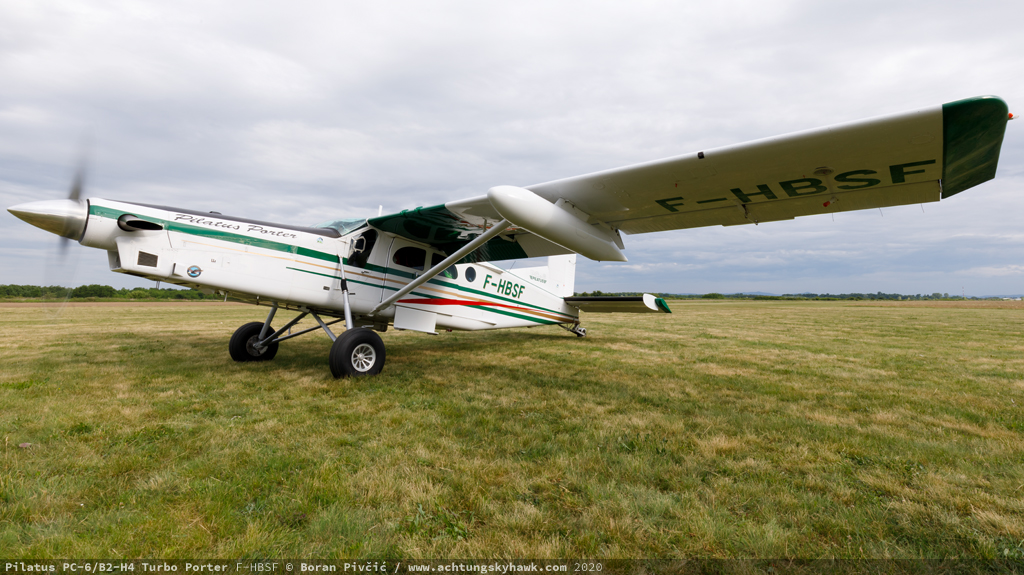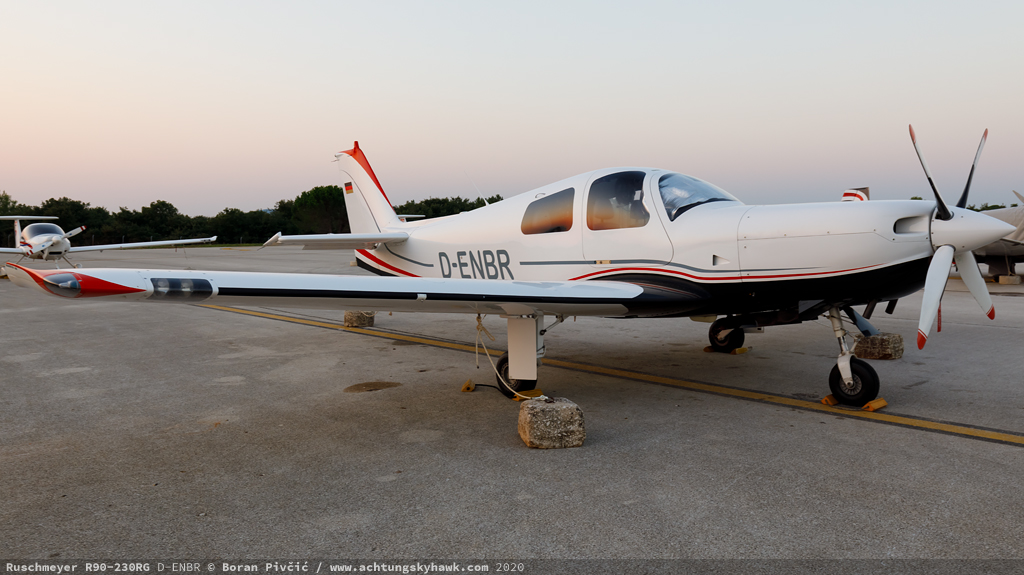By me
All photos me too, copyrighted
While going through my photo database in search of material for my previous Flying In The Time Of Corona photo file, I discovered that there’s plenty of stuff in there for a follow-up post as well – but this time focusing solely on foreign visitors to Croatia’s many coastal airports (+ Lučko of course). Like our own birds, these too could not be scared off that easily, arriving into the country in quantity and quality rarely seen even in years past. And since it would be rude of me to keep them all for myself, another summer time Photo File is obviously in order! (to build on the two bonus Cessna 172RGs already featured in their own post)

Before they can learn how to fly, young gliders must first learn how to taxi. To make that big step easier, their owners often fit them with training wheels and take them for short strolls around the apron. With time, they will progress to longer walks all the way to the runway – and eventually, when they feel more comfortable at the airport, they will finally be able to spread their wings and start flying all on their own…

A 210 on a hill… in the middle of an airport… next to a fire trainer… by a fuel farm… in the shade of an olive grove… well, that’s this week taken care of! What may eventually become the new static exhibit at Split Airport (SPU/LDSP), OK-TKN had arrived into town unexpectedly following an in-flight engine failure, and is now caught up in the financial and logistical nightmare of getting it going again…

Another skydive PC-6 – and another drive to see it right after the night shift. What makes this 2006 example a little bit more special is that it sports the 680 HP PT6A-34 engine instead of the stock 550 HP 27 series – and is seen carrying the type’s somewhat uncommon external fuel tanks. Carrying another 200 liters each, they give the PC-6 an impressive seven hour endurance – itself quite a neat trick on workdays when F-HBSF is used as an aerial imaging platform (for skydive ops they’re empty, but to simplify handling they’re usually left on the wing, since their performance penalty is quite small all things considered)

One of only 30 or so ever made (and the second one to end up in front of my camera), this beautiful Ruschmeyer R90 is one of those fantastic “what could have been” machines that make GA so special. Designed by Horst Ruschmeyer of Hannover in Germany, the R90 was an attempt to bring together all the cutting edge tech of the late 80s and combine it into a high-performance four-seat touring aircraft made squarely to European – rather than American – measure. Built entirely out of fiberglass (which was tested to destruction) and sporting a speedy laminar flow wing, it could touch 300 km/h in the cruise on just 230 HP – making it faster than pretty much every other aircraft of its power class. Its real party piece, however, was its noise signature: at full chat, it could do just 66 dB – roughly equivalent to the noise level of a typical office, and some 8 dB below the strictest level required by law. To do this, it was fitted with specially-designed exhaust stacks and a bespoke short-span four-blade composite prop – while the engine itself, a Lycoming IO-540, was actually derated down to 230 HP from its default 260 to cut down on all the yelling. Beautifully finished and with handling characteristics that were described as “a real treat”, the 230RG was supposed to launch an entire family of aircraft, including everything from a 190 HP fixed-gear “budget” model to a 470 HP Rolls-Royce 250 powered speed machine. Unfortunately, the design took until 1990 to sufficiently mature, by which time the market had slumped so hard that even Cessna had to throw in the towel. The results were depressingly predictable: after just five years of production and a single variant, the Ruschmeyer works filed for bankruptcy – and, despite attempts by other companies to revive the design, that was that for the sleek little R90…

So similar, yet so different: two “budget speedsters” that show just what can be done with some clever engineering and a bit of compromise. An aircraft that had set new standards for efficiency in its class, the Mooney M-20J (on top) was rebranded as the “201” when it became the first four-seat touring aircraft to reach 201 miles per hour (175 kts; 320 km/h) on just 200 HP. Though it had paid the price in payload and interior space – and required an extensive aerodynamic cleanup by the legendary Roy LoPresti – the J had set the stage for today’s M-20V, which needs only 280 HP and a turbocharger to cruise at 242 kts (450 km/h)… two thirds of the Q400’s maximum speed // But the more interesting machine is the Duruble RD.03 Edelweiss, an aircraft that needs only 180 HP and a fixed-pitch prop to do 147 kts (270 km/h) while sipping just 8.7 gallons an hour – roughly what a Cessna 172 would drink, using exactly the same engine and prop, to do 110 kts (204 km/h). What’s even more fascinating is that the RD.03 is actually a homebuilt, and was designed in the 70s by Roland Duruble, a marine engineer by trade. Other interesting bits include hydraulically operated landing gear and flaps, the latter extending automatically to the desired setting in response to airspeed – stuff unheard of even on turboprop twins. Another neat trick is that the horizontal stabilizer has a slight dihedral – it is mounted at an upward angle – so that it remains clear of the turbulence coming off the flaps (an effect that is quite pronounced on the Q400 at Flaps 35, and results in noticeable airframe vibration). This particular machine had been completed in 2003, and aside from the uprated 180 HP engine (the type standard is 160), it also sports a Lancair-style air intake that gives an additional performance and efficiency boost. In fact, the build is so sweet that it had featured in several GA magazines – often with the tagline “France’s homebuilt Mooney”

I may be small – but at least I’m weird. An aircraft whose elegance immediately belies its Italian origins, the Partenavia P.68 boasts quite an unusual cocktail of characteristics for a “serious six-seat touring aircraft”: a high cantilever wing, a pair of “small” IO-360 engines and – most interesting of all – fixed landing gear. But, while this may raise eyebrows, there’s quite a lot of method to its madness: from the outset, the P.68 was designed to be an efficient, affordable and user-friendly alternative to conventional twins of the 1970s, using sleek lines and clever aerodynamics to cruise at 300 km/h on just 2x 200 HP – and calculating that the drag penalty of the gear is a lesser evil than the weight, cost and complexity of retractable units (an approach later also taken by Cirrus). And it worked: in continuous production since 1971, more than 430 have been sold so far – including 20 of its glass-nosed patrol & observation models, the P.68 Observer & Observer 2 – making it one of Italy’s most successful GA designs. And if it reminds you somewhat of Tecnam’s new P.2012 Traveler, rest assured that the resemblance is NOT coincidental: the P.68 was in fact penned by the brothers Luigi and Giovanni Pascale, who would in 1986 go on to found the same “Costruzioni Aeronautiche Tecnam”…

Another speedy Italian Job – but with an unusual address (in Latvia no less). One of the many LSA designs to come out of Italy during the late 80s homebuilt boom, the Century 04 is a fixed-gear derivative of the earlier Century RG, featuring a 100 HP Rotax 912 w/ a constant speed prop – both of which are good for a solid 200 km/h in the cruise while sipping just 10-15 liters per hour. With space for a proper 2+2 config – but sporting only two seats to give more baggage space – YL-ARV will likely become a Lučko native soon…